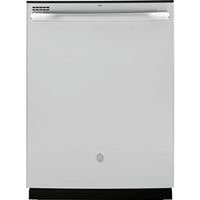GE dishwasher not draining. Potential indications that the dishwasher is having issues with the drainage system include puddles of water left in the machine upon completion of each wash cycle.
Here are a few ways to troubleshoot and resolve common draining problems that lead to this occurrence. Check the filter for blockages/clogs, removing and rinsing out all items that restrict water flow during each cycle.
Consider working with a technician if troubleshooting efforts fail to result in positive results for remedying this concern.
GE dishwasher not draining
GE dishwashers not draining. Check below the sink for a kink or blockage in the drain hose. New dishwashers come with a white corrugated drain hose, so make sure you use this.
Using old hoses from previous models may cause them to kink at some point, so new ones are recommended instead. Make sure your kitchen sink is also not blocked.
GE Dishwasher Filter is Fill
A dishwasher filter screens out larger food particles to prevent them from clogging the pump. A GE dishwasher not draining may have a filter that’s clogged with these particles, restricting water flow.
Our dishwasher loading tips suggest removing larger particles from dishes before loading the dishwasher. However, regular cleanings are the best way to avoid clogs and drain problems.
One of our most important pieces of advice, when it comes down to avoiding having your dishwasher getting clogged, is simply making sure you’re doing regular cleanings on its parts.
This means ensuring that all of its filters aren’t getting dirty if they haven’t been cleaned in a while or even replacing them altogether (which shouldn’t ever actually be necessary) if they’re just too full of grime and other substances which will only end up blocking your GE’s drainage system completely eventually.
The drain pump is defective
The drain pump uses an impeller to force water through the drain hose. If the drain pump is not working, your dishwasher won’t drain properly.
To determine if the pump motor is defective first use a multimeter to check for continuity.
If there is no continuity or if power is flowing but the pump will not run, you must replace it with a new pump.
There are no parts of this drainage system that can be repaired and unfortunately, it must be replaced if it burns out.
The impeller is broken
The drain impeller forces water through the drain pipe and into a disposal unit or to the sewer system. If it’s clogged or too slow, remove and replace it.
The drain valve is Faulty
With use, the drain valve can become clogged with debris. To make sure water can still flow freely through a drain valve, clear out any clogs that may have occurred.
If your drain valve is free of clogs but will not activate, replace it with a new one. Drain valves are not repairable if there are system defects in your plumbing and as such you will need to replace them with a brand new drain valve once it becomes defective beyond repair.
The water pump belt is broken
The water pump belt might be worn out or broken. To tell for sure, locate your model number and search for it online to see if you can find specific details about your machine.
If the belt is damaged or broken, simply use screwdrivers to remove the lower panel from the dishwasher’s inner walls after which you will gain access to replace the water pump belt.
While taking extra care not to break any fragile items inside the dishwasher during this process. If a part is damaged, such as the water pump belt, it may have been misaligned or damaged by accident.
The drain hose might be clogged
The kitchen sink seems to be clogged up, right? To remove the blockage and make sure the sink drains better, remove the drain hose from below both the garbage disposer and dishwasher.
The most common problem is that drain hoses are often clogged near either the garbage disposer or dishwasher, so examine where they connect with each other and try to clear any food particles out of it.
The check ball is stuck
The check ball is used to prevent water from flowing back into the dishwasher during the draining cycle. The ball momentarily allows water to flow through in an open position by permitting water to pass only in one direction.
This prevents siphoning of water from the tub and maintains a steady stream while water is expelled from the hose. If the ball becomes stuck, it will prevent the valve from returning to its original position after the opening, which is referred to as closing.
Check Valve issue
Dishwashers need a check valve to prevent any water from leaking back into the machine after it has drained. If your dishwasher has any leaks when it rains, it is likely due to the check valve malfunctioning.
To fix this problem, you should remove the old valve and replace it using a new one of the same brand as your device.
GE dishwasher not draining
Related Guides
